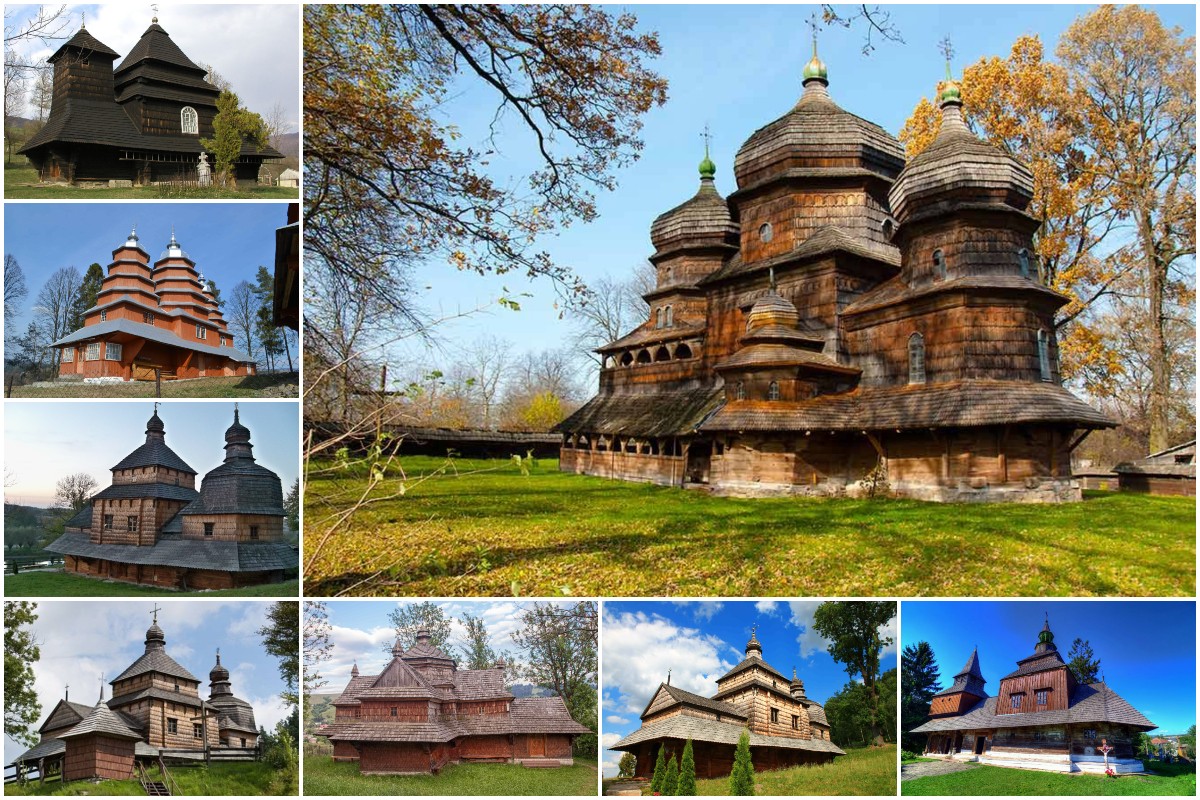Ukraine is home to the biggest number of wooden tserkvas (churches) in the world, more than 2500. They impress with shapes, perfection, diversity and a wonderful combination of construction and beauty. Ukrainian wooden churches fascinate with their harmony and beautifully contribute to their landscapes. They are important landmarks in our country and withnesses of rich Ukrainian history.
In 2013, 16 wooden churches of the Carpathians were included in the UNESCO World Heritage list; 8 of them are located in Ukraine and the other 8 are settled in Poland. The ones located in Poland were also built by Ukrainians, but due to historic events, they stand on the territory of the neighboring country. UNESCO World Heritage status enabled Ukrainian masterpieces to gain the highest monument protective status, and also drew the attention of many tourists from all over the world.
Let’s admire them and pick out trips around Ukraine in which you can see them.
Drohobych “poem embodied in the wood”
St. George’s Church in Drohobych is a significant landmark, not only in Lviv area, but the whole of Ukraine. Experts put it in the list of the three most outstanding wooden masterpieces in Ukraine. Art critics call it “a true poem embodied in wood, hewed out with an axe”.
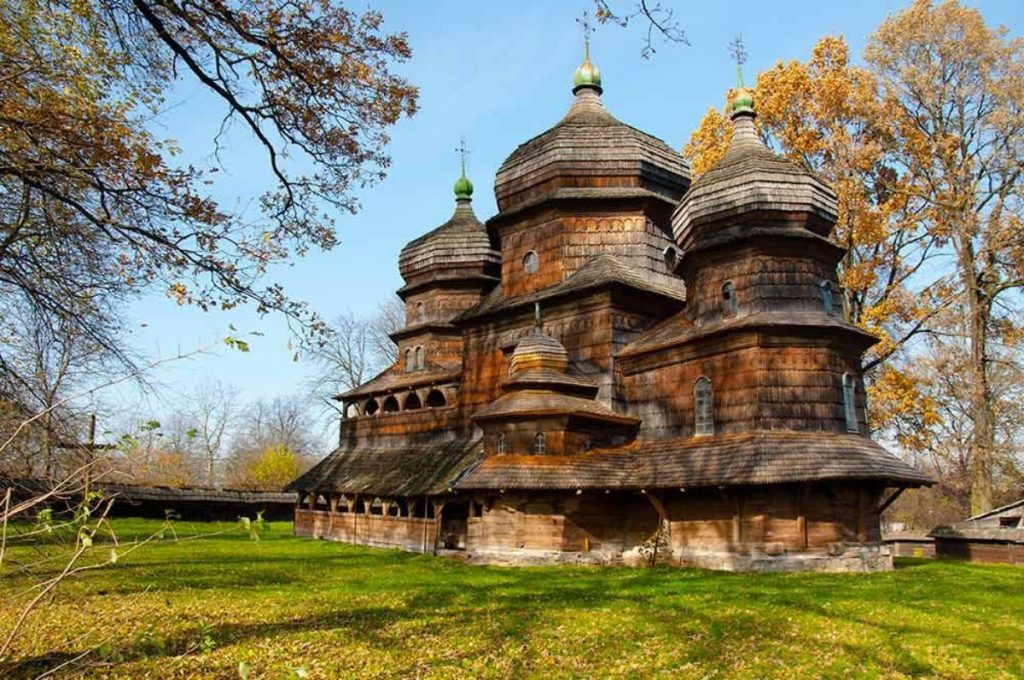
As with all ancient buildings, the church became the issue of discussion among historians. They dispute upon the date and history of its construction. There is a record that there was a wooden church here in the 15th century, but the church on this site has been rebuilt since then. The non-assembled church from Nadiiv village of Dolyna area (Ivano-Frankivsk) was exchanged for salt and taken here on carts. It was installed in Drohobych and renewed with some new elements. These events date back to 1657, and the year is considered to be the starting point of its life. The iconostasis here is also ancient. It traces back to 1666, and the wall painting dates to 1691. They were made by local artist Stefan Medytskyi. Some time later, in 1678, the bell tower was built next door.
The church is traditional tridental and the roof is wood shingled. The bottom of the church is rimmed with arcade galleries. The wall paintings are well-preserved, depicting not only the lives of Saints, but also their social life, portraits of merchants, allegorical seasons, a heraldry tree of Christ, the drama of the Last Judgment and even the Apocalypse.
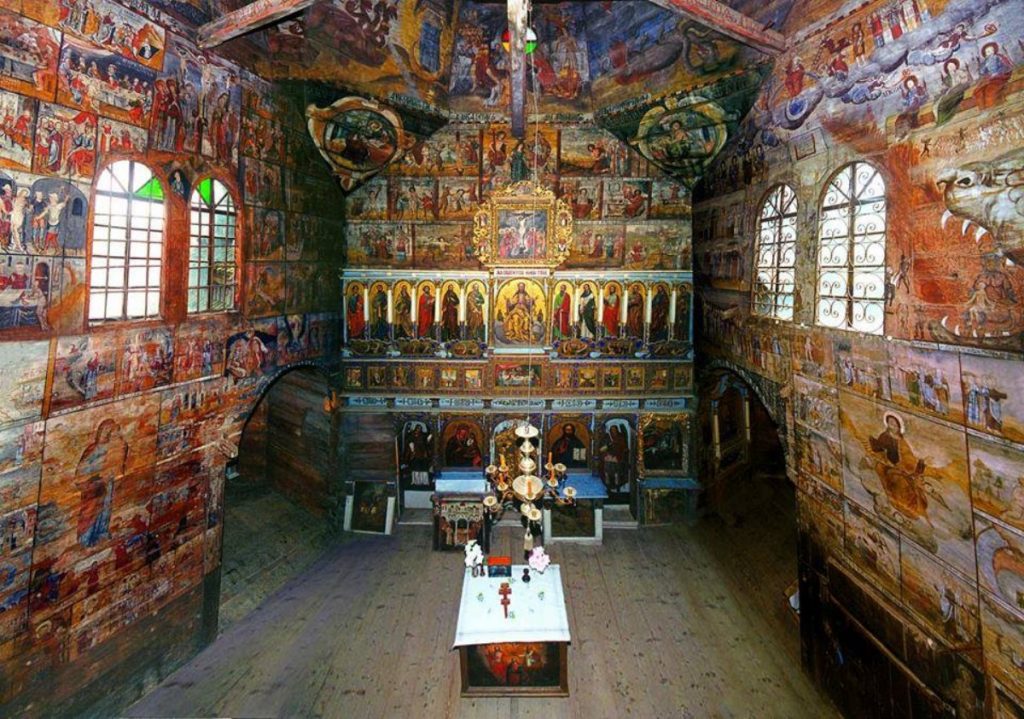
Now the church functions as a museum, displaying wooden architecture of the museum “Drohobych Land”. You can view this fascinating gem during the excursion “Drohobych, Medenychi, Nahuievychi” (1 day).
The Renaissance wooden church in “a perfect city”
Zhovkva Holy Trinity Church was built in 1720. No nails were used to construct the church. It is made fully of wood and covered with wood shingles. According to historical records, the church was financially supported by Kostiantyn, the son of the king of the Polish–Lithuanian Commonwealth, John III Sobieski, the owner of the town at that time.
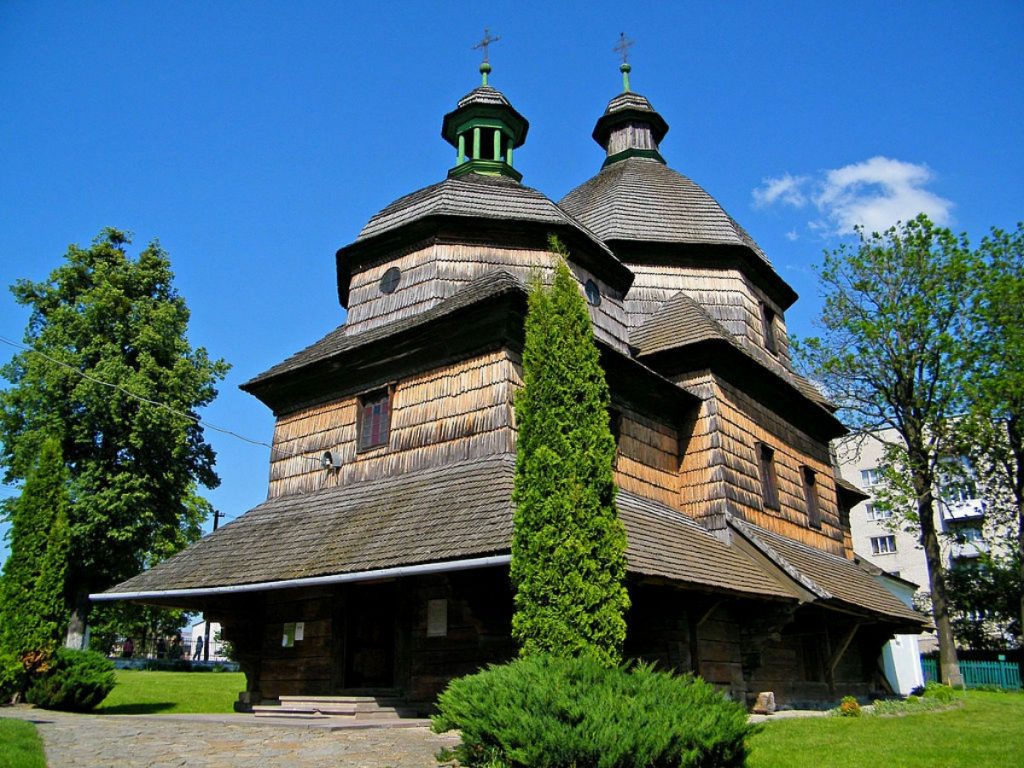
Besides the building itself, the iconostasis is also of great value. Historians say it is older than the church, dating to the 17th century. Probably, they managed to save it from the previous church when it burnt down. The iconostasis is made by craftsmen of well-known Zhovkva school of carving and painting. The craftsmen stood out by applying Ukrainian stylistics to sacral themes. The iconostasis of the Ukrainian baroque features rich ornate, sculptured carving, round icons. The five-tiered iconostasis of Holy Trinity wooden church encompasses 50 icons of different sizes.
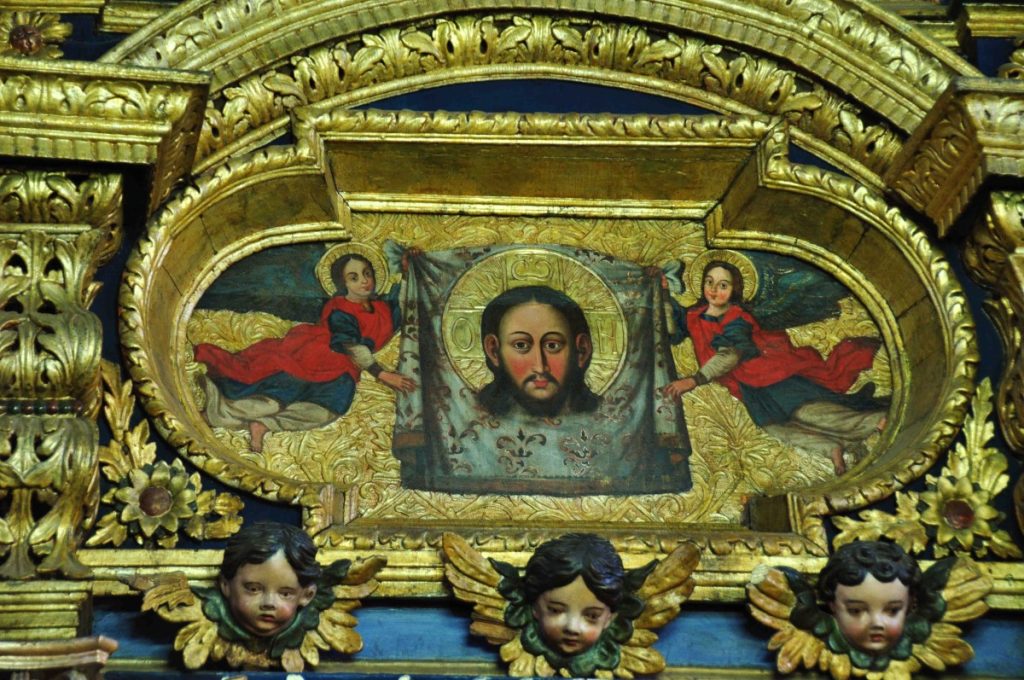
After some time, they built a stone annex next to the wooden church, some of its elements, such as the windows and portals, were taken from a broken-up tower of the Zhovkva Castle.
You can admire the church on the trip “Zhovkva, Krekhiv, Stradch” (1 day).
The oldest 500-year-old church of potters
Potelych Holy Spirit Church is one of the oldest wooden places of worship in Western Ukraine. Historians trace it back to 1502. The church was built at the site of its predecessor after the Tatars burned not only the sanctuary itself but the whole town. Those were local potters known far beyond the borders of their region who ordered to build this place of worship. The iconostasis is a century younger than the church, and one of the icons, “the Deesis” (1683), was painted by prominent artist Ivan Rutkovych.
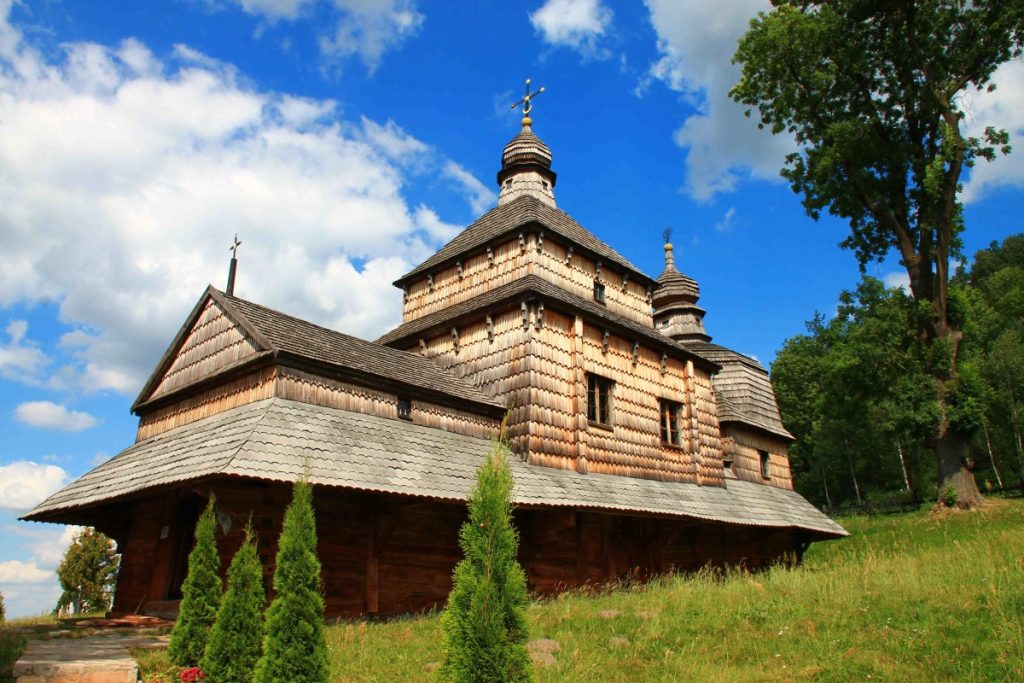
Bohdan Khmelnytsky is said to have worshipped God in this church. In ancient times, 7 Cossack cannons were installed next to the church. Two wooden guard towers have been retained till present day.
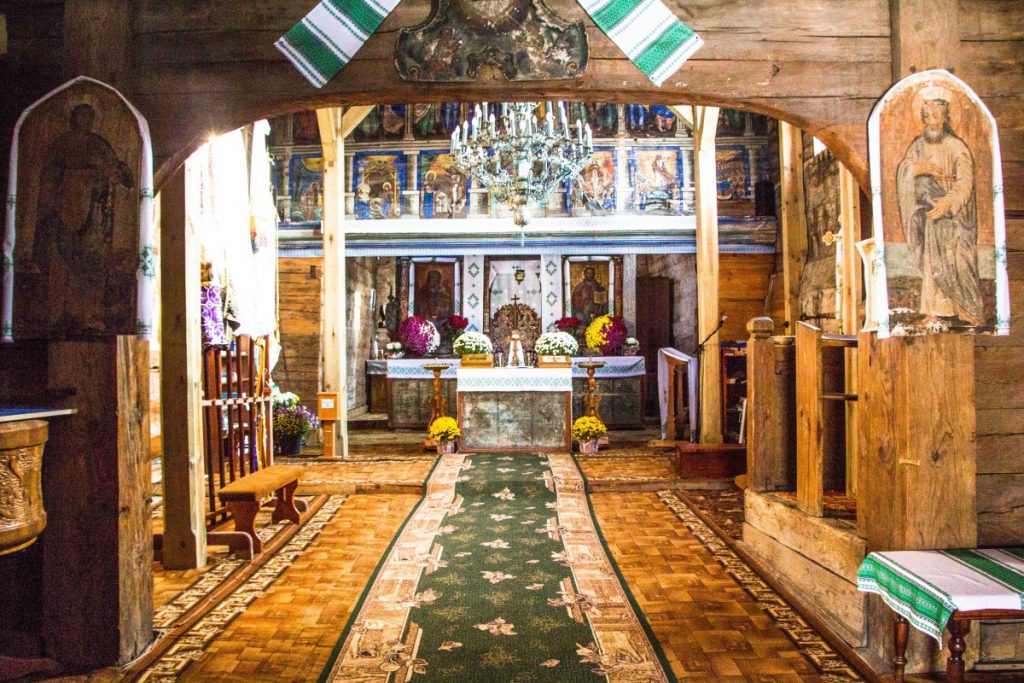
Sacral complex with a similar wooden bell tower is located on the hill. There is a pond nearby, and a small bridge leads to the church.
The sanctuary fascinates everyone who take the excursion “From Potelych to Zahlyna” (1 day).
Boykos pyramid
Boykos church in Matkiv village in Turka area is a little younger than the others in Ukraine included in the UNESCO list. There is more distinct record about it: it was built in 1837. Ivan Melnykovych and Vasyl Ivanykovych are the craftsmen who constructed this place of worship. There are letterings on the main west portal saying: “Tey swiatyni fundamenta”, on the left door – “Zalozone dnia 21 czerw”, on the right, “Roku 1838”.
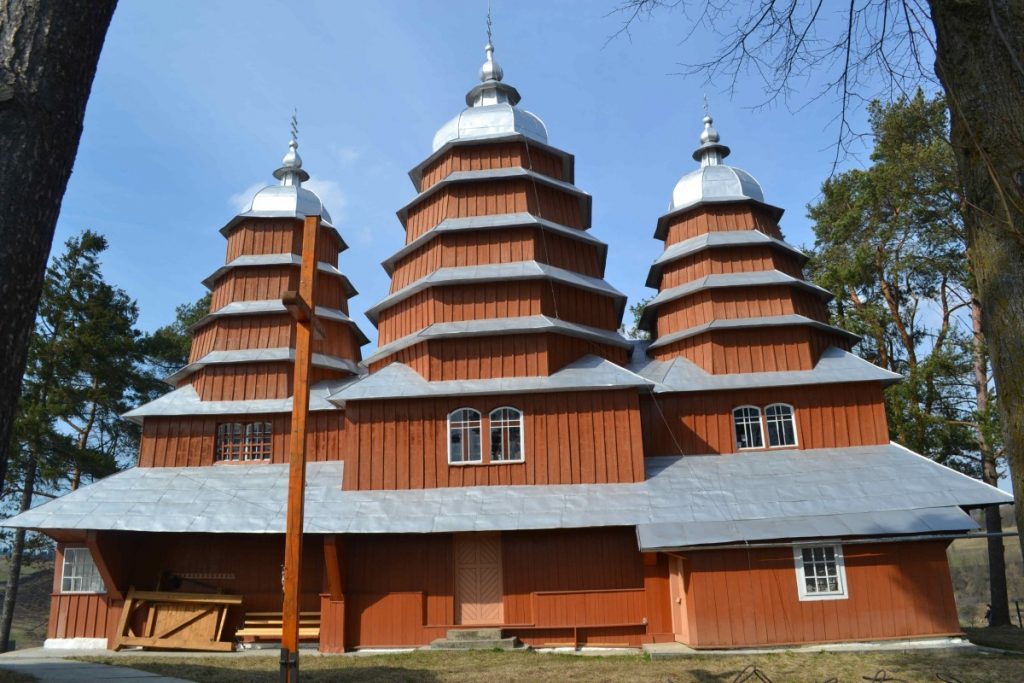
The Church of the Blessed Virgin Mary is designed in a typical Boykos style. It has a three-section design, with multiple-layered domes that resemble fir-trees. The bell tower is newer, constructed in 1924. In Soviet times, it was closed from the public. When the church was opened again, they consecrated it in honor of St. Demetrius, and now it belongs to the UGCC (Ukrainian Greek Catholic Church).
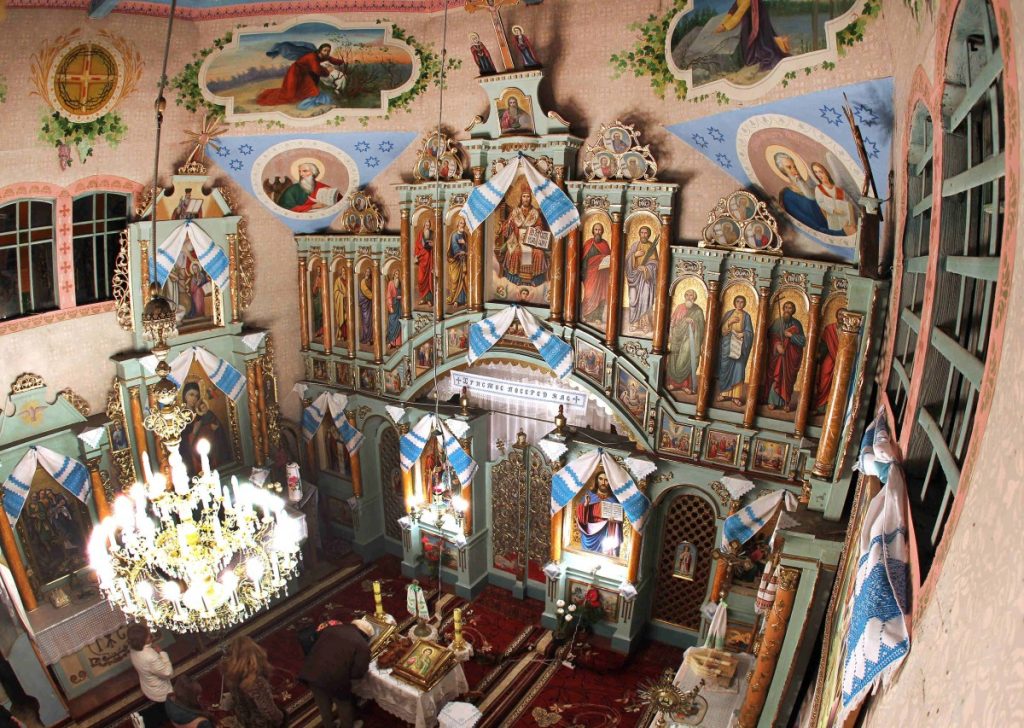
To witness how harmoniously the church matches the landscape, join the trip “The Carpathian new discoveries for 5 days” (5 days/4 nights).
The Church of Hurrem Sultan
One of the most ancient wooden churches of Ivano-Frankivsk area is located in Rohatyn. Experts dispute upon the dates when the Church of the Descent of the Holy Spirit was built, but 1598, the year written on the interior wall, is considered to be the starting point. Even though the church is not a sacral building, but rather a museum, it possesses authentic iconostasis of 1650 that is considered to be the oldest in Ukraine, designed in the Renaissance and Baroque-era style and ordered by the church brotherhood of that time.
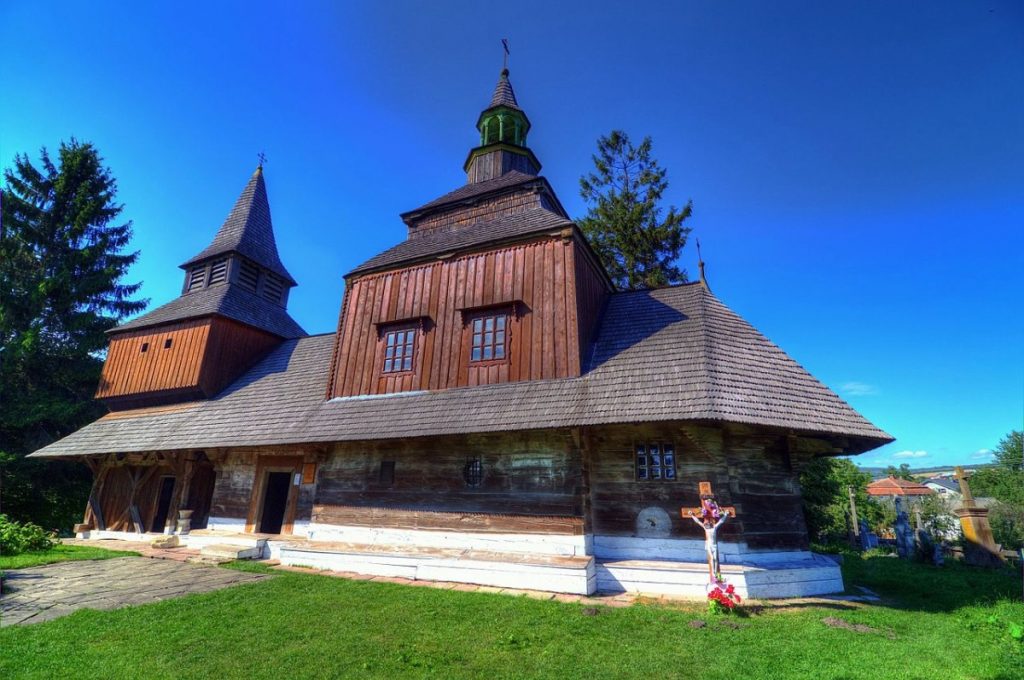
The museum church holds some genuine icons, and also the ones taken from other churches of the region. They are dated to XVI-XIX centuries. That is why wooden architecture and painting of those times serve as the theme of the museum. It is also a branch of Ivano-Frankivsk regional art museum. The bell tower connected with the church was attached later, in the 19th century. An old cemetery surrounds the church. And the church itself is said to have underground secret passages that led to the other Church of the Nativity, but now they are blocked. .
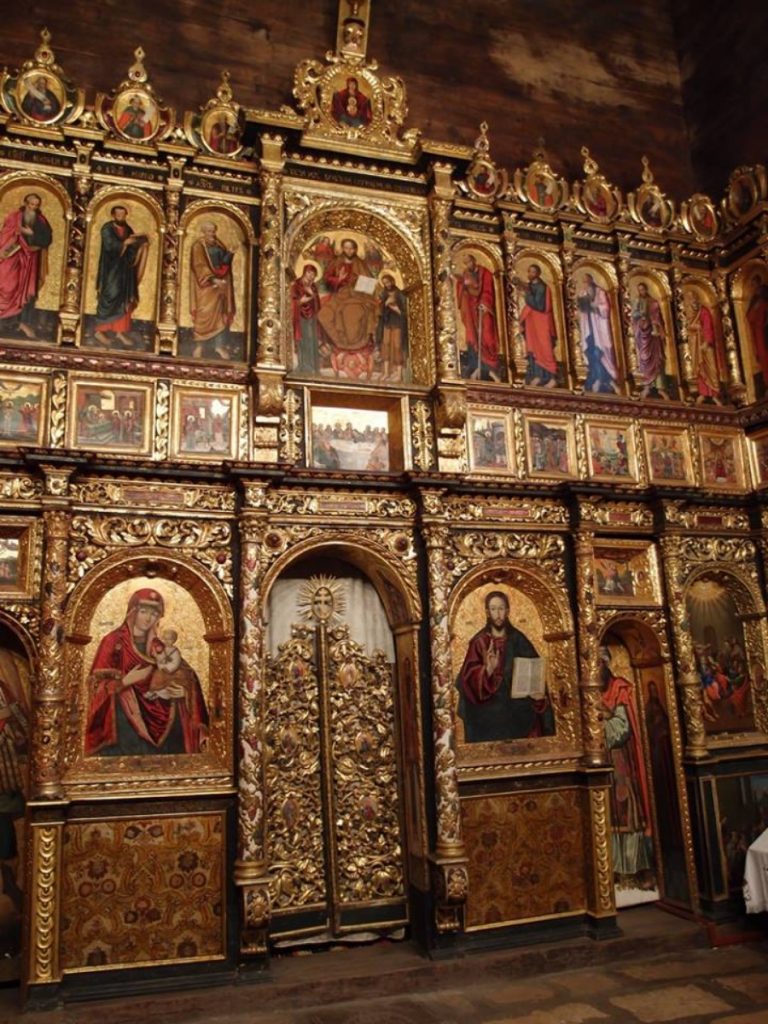
Another interesting thing, or rather a legend, says that the parson of the church was the father of well-known Roxelana (or Hurrem Sultan), the wife of the sultan of the Ottoman Empire, Anastasia Lisowska. But her personality is the subject of conjectures, fictions, or even romantic literature, as well as the date of this old wooden church origin.
You can witness perfect forms and high taste of constructors of this place of worship taking tours “The Hutsul Carpathians + Bukovel” (2days / 1 night), “Yaremche, Bukovel + Hoverla” (2 days /1 night).
Opryshky’s avert by praying
Construction of the Church of the Nativity of the Most Holy Mother of God in Nyzhniy Verbizh village in Kolomyia area, began at the end of XVIII century. Stories say its construction was finished in 1808 by former Dovbush’s fellow, long-liver of the village Hryhir Semeniuk for the opryshky’s money. They say he wanted to find a way to justify the sins of his young age. Before that, in 1743, the wooden bell tower was built. For the church construction, the Austrian kaiser prized Hryhoriy with a gold medal. He was buried at the age of 114 next to the church and his tomb is still preserved.
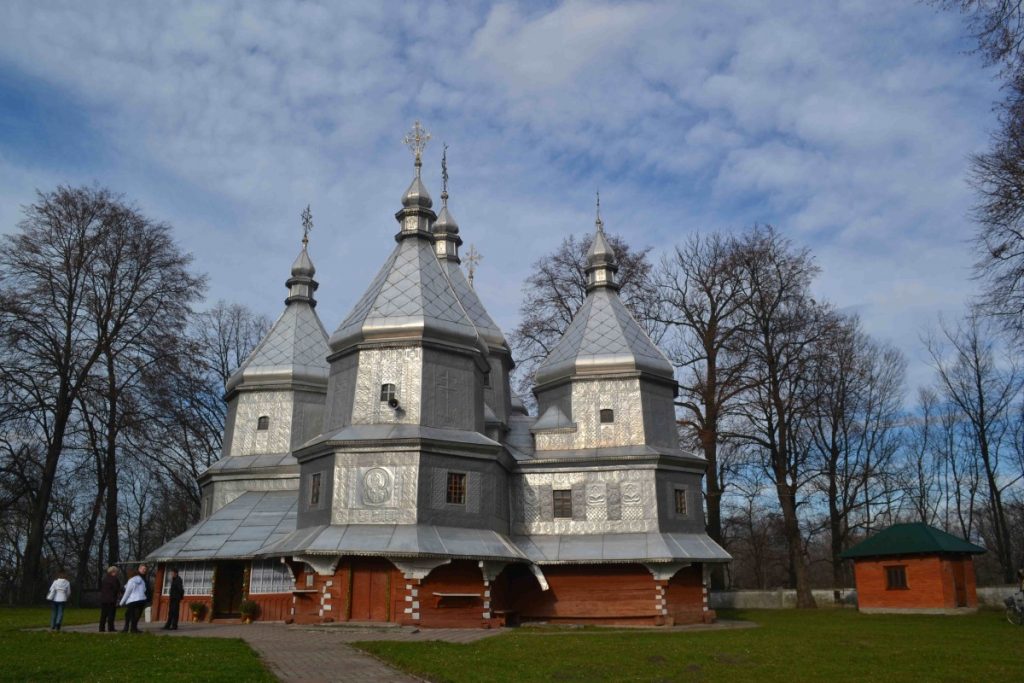
The church is fully made of wood, it is five-domed and of Hutsul type. The iconostasis dates back to the beginning of the 19th century. Five domes are devoted to Jesus Christ and the four evangelists. In XX century the church was covered with metal plates. But it had no issue with adding the sanctuary to the UNESCO top list. They will have to return the genuine wood design to the building. Now the church is closed for the public since the community of the Orthodox Church of Ukraine built a new and big church.
You can see the unique church taking tour “Hutsul Stonehedge” (2 days/1 night).
Ash trees that saved the flock of sheep and gave birth to a village in Trans-Carpathia. The Struk church
The Church of the Ascension of Christ (1824) in Yasinia village in Rakhiv area also embrace the Hutsul traditions and heritage. You may hear the other name of this place of worship – the Struk (Strukivska) church. Stories say the church was built by a shepherd called Struk as a token of gratitude for saving his flock. Winter came out of a clear blue sky when a flock of sheep was amidst the mountains. It was impossible to return them back and Struk constructed a sheep shed in an ash tree grove. Struk himself hit the road across the mountain pass to Galicia village Zelene to survive the winter. When he came back there in spring he found sheep alive with a crop of lambs. As a gesture of thanks, he built a church here. Later, a village spread around the sanctuary. The village was named in honor of ash trees (yaseny) that saved the sheep, Yasinia. In the church, there is a holy banner depicting a shepherd with sheep.
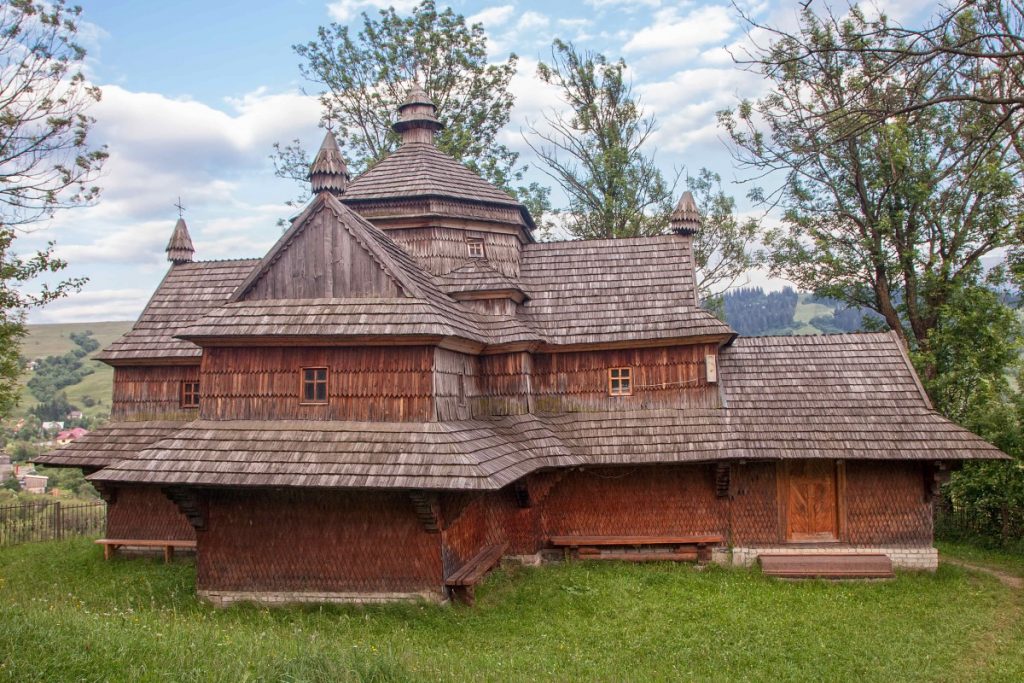
The church constructed in the form of a cross is a unique example of the Hutsul-style design with the influence of Galicia sacral architecture. The 11-meter high whitewood bell tower from 1813 is also one of the perfect works of sacral architecture of Trans-Carpathia. It was taken from another village church, the one that was burnt.
Take trip “Heading for Rakhiv for brynza (via Drahobrat)” (2 days/ 1 night) to witness this Hutsul masterpiece.
Black church nestled in the mountain pass
Another church of Trans-Carpathia from the UNESCO List is set next to the Uzhok pass against the background of picturesque landscapes. Here the Uzh River has its source with the administrative center around.
St. Michael church from Uzhok village of Velykyi Bereznyi region is built from fir-tree logs in 1745 and roofed with black wood shingles. It belongs to the most interesting construction of Boykos type. As in Rohatyn, the bell tower is united with the body of the church and sticks out of the dome of the church placed over the forechurch. Another, separate bell tower, was built next door in 1927.
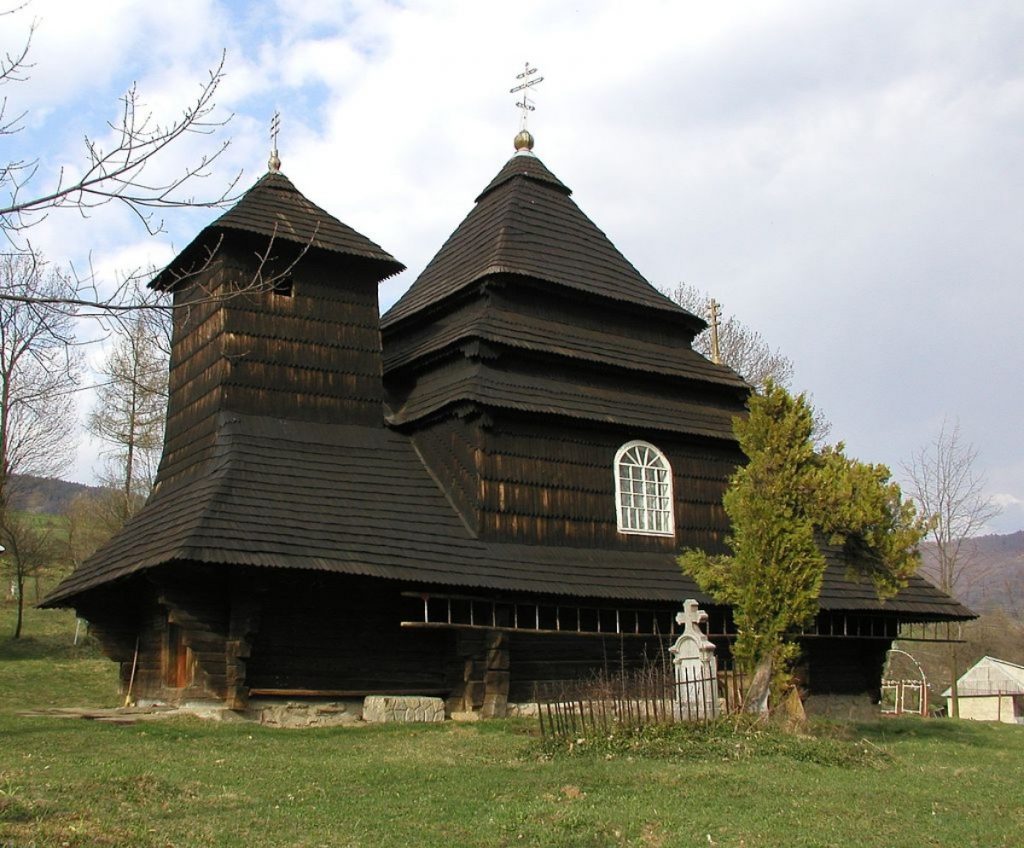
The interior of the church strikes with contrast: starting from the forechurch you step into a big and well-lit nave that leads to sacramental gold-filled carved iconostasis.
Take mountain tours “The Trans-Carpathia pleasures” (2 days/1 night), “The Carpathian new discoveries for 5 days” (5 days/4 nights) or ecumenical tour “15 churches and monasteries of Trans-Carpathia” (2 days/ 1 night).
Visit the symbols of our land and admire the best Ukrainian wooden churches added to the UNESCO World Heritage.

